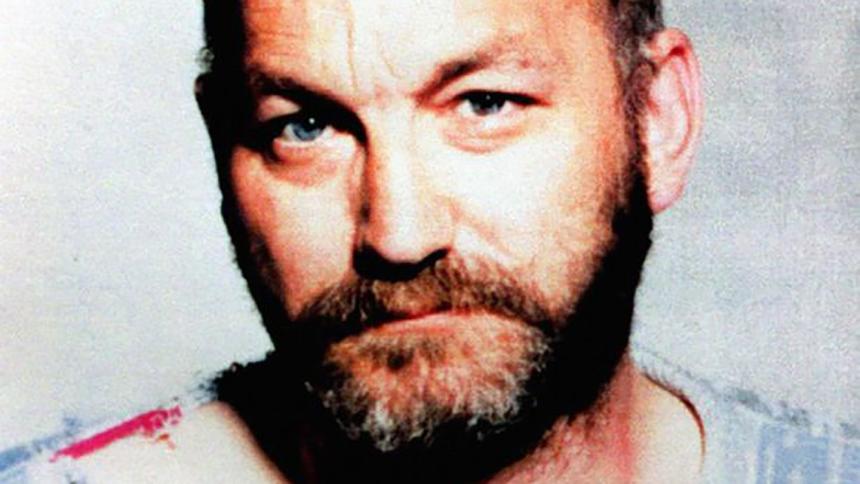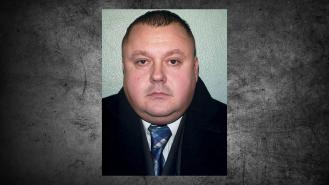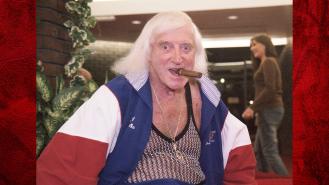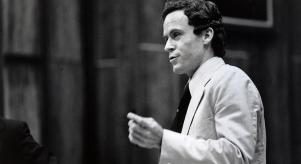
Robert Black: a prolific and dedicated predatory paedophile
Some of the world’s foremost experts on deviant and murderous human behaviour have gathered for the new true crime series Making a Monster. In each episode, they offer penetrating insights into the cruel and grotesque crimes of notorious serial killers, asking how such people came to be.
Born in Stirlingshire and placed with a foster couple as an infant, he was a misfit from a very young age, known in his school as 'Smelly Bobby' because of his poor hygiene, and prone to attacking fellow pupils. Running parallel to this was what forensic psychologist Dr Julian Boon calls his 'developmentally abnormal' sexuality, wherein Black would expose his genitals to other children his own age and also sexually experiment at home before he had even reached puberty.
The young Black’s disturbing behaviour towards girls in school led to him being placed at a care home, where – in what was perhaps a fatally formative moment for his psychology – he was himself sexually abused by a male staff member. Was this what set Black, already sexually aggressive, on the path to the horrors to come? He himself later claimed that, shortly after his time at the care home, he began numerous molesting girls he met in their own homes while working as a delivery boy for a local butcher in Greenock, Scotland.
A particularly heinous early crime took place in 1963, when Black lured a young girl from a park into the seclusion of an old air raid shelter, where he sexually assaulted and choked her, almost to death. Incredibly, he served no time for the offence despite being charged, with psychiatrists deeming it to be a one-off aberration. Such molestations would continue. A few years later, Black was evicted from a house he was staying in when the owners realised he was touching their granddaughter.
Black was clearly far removed from the norms of society by this point, and aside from one failed relationship with an adult woman, he made no other attempts to set himself on the course to a normal, law-abiding life. A fateful turning point came when he started working as a van driver for a London-based company, his job being to deliver poster advertisements across the country. This would allow him to strike in random, remote areas, unlike other serial killers who make the jobs of detectives slightly easier by operating within a defined geographical radius.
Black clearly planned his crimes meticulously. He had the right job. He had the right vehicle – a van whose back windows could be blocked with black curtains. He even invested in different kinds of spectacles, to crudely disguise himself in new surroundings.
And so the killings began. His first victim, in 1981, was nine-year-old Jennifer Cardy in County Antrim, who vanished while cycling to her friend’s house one ordinary afternoon. Her body was found just under a week later, submerged in a reservoir. She had been sexually assaulted and drowned. His next victim, 11-year-old Susan Maxwell, went missing on the England-Scotland border in 1982, but her body was found hundreds of miles away – a clue that the killer may have been some kind of travelling businessman or delivery driver.
In 1983, Black preyed on his youngest victim, five-year-old Caroline Hogg just outside Edinburgh. Witnesses reported seeing a dishevelled, balding man with thick spectacles following Hogg to a fairground, and then leading her away by her hand. She, like Maxwell, was eventually found dead, several hundred miles away. The distances meant that a number of different police forces had to coordinate their efforts to track down the terrifying child killer who was able to strike unexpectedly without warning.
A 10-year-old Leeds girl called Sarah Harper was the next to die, after she went out to a corner shop by her home in 1986. Despite the thousands of enquiries by countless detectives across the land, and investigations into numerous convicted paedophiles, there seemed to be no way of stopping the culprit. In fact, Black was eventually caught out of sheer good luck, when a retired postmaster in a village in Scotland happened to literally see Black in the act of bundling a little girl into his van.
The postmaster immediately ran to tell the child’s mother, but it looked like the kidnapper had got clean away. Then, to everyone’s shock, the van reappeared in the area, causing police officers to leap into its path. The officer who accessed the van and rescued the young, gagged victim from inside a sleeping bag happened to be the girl’s own father.
Robert Black attempted to pass it off as 'a rush of blood to the head' – an unpremeditated, spontaneous act of paedophilic lust. But police soon realised he was a likely suspect for the murders that had appalled and frustrated detectives throughout the UK, and they painstakingly pieced together all the circumstantial evidence against Black, including petrol receipts that placed him close to where the girls had vanished. So much paperwork was amassed that lorries were required to transport 22 tonnes of material to the court.
The riddle of Robert Black, the key to his creation, remains almost unfathomable. Ray Wyre, a trailblazer in the field of treating sex offenders, suggested that Black’s need for total control, coupled with his utter inability to feel remorse, meant he would never want to reveal insights about himself. But Black did speak one absolute truth, on the day he was sentenced for multiple murders, when he turned to the detectives who’d helped bring him to justice, and simply said: 'Well done, boys'.







